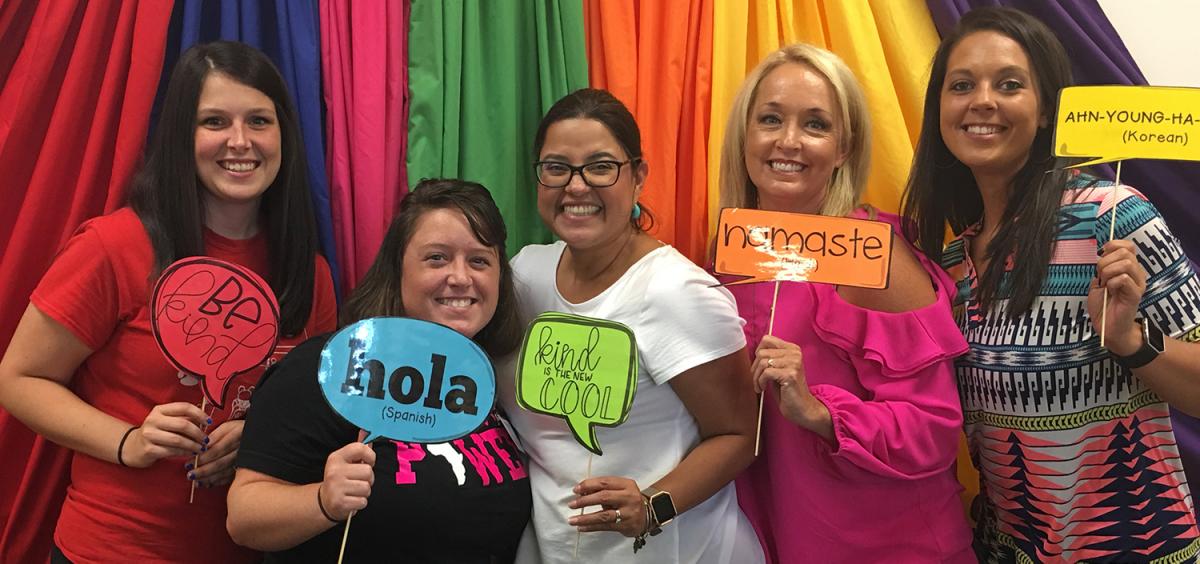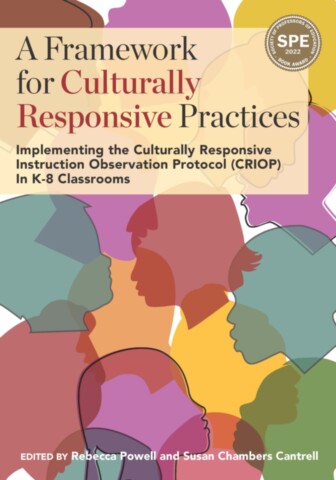The Culturally Responsive Instruction Observation Protocol (CRIOP)
The Culturally Responsive Instruction Observation Protocol (CRIOP), originally developed in the 2010's by a team of researchers in Kentucky, has been used to document and assess teaching practices in research studies across the United States. The CRIOP is grounded in research on culturally responsive instruction and is designed to be a tool for guiding practitioners in their development as culturally responsive educators. The six elements-- Classroom Relationships, Family Collaboration, Assessment Practices, Instructional Practices, Discourse, and Critical Consciousness, offer a useful framework for addressing culturally and linguistically responsive instruction. Research shows that students of teachers who implement many of the CRIOP elements typically outperform students of teachers who do not.
In partnership with the U.S. Department of Education Office of English Language Acquisition, the CRIOP framework is being used to guide studies funded by the National Professional Development Program. Learn more about culturally responsive teacher professional development studies happening now at the University of Kentucky: Project PLACE, Project ExCEL.


The CRIOP Elements and Indicators
Classroom Relationships: Establishing teacher care and a culturally responsive classroom environment.
- The teacher demonstrates an ethic of care (e.g., equitable relationships, bonding).
- The teacher communicates high expectations for all students.
- The teacher creates a learning atmosphere that engenders respect for one another and toward diverse populations.
- Students work together productively.
Family Collaboration: Promoting open communication between families and the teacher, developing partnerships with parents and caregivers, and valuing “funds of knowledge”.
- The teacher establishes genuine partnership (equitable relationship) with parents/ caregivers.
- The teacher reaches out to meet parents in positive, non-traditional ways.
- The teacher encourages parent/ family involvement.
- The teacher intentionally learns about families’ linguistic/ cultural knowledge and expertise to support student learning.
Assessment Practices: Discovering students’ strengths and literacy competencies, and observing students’ potential for learning.
- Formative assessment practices are used that provide information throughout the lesson on individual student understanding.
- Student are able to demonstrate their learning in a variety of ways.
- Authentic assessments are used frequently to determine students’ competence in both language and content.
- Students have opportunities for self-assessment.
Instructional Practices: Incorporating students’ cultural knowledge and affirms students’ racial and cultural identities.
- Instruction is contextualized in students’ lives, experiences, and individual abilities.
- Students engage in active, hands-on, meaningful learning tasks, including inquiry-based learning.
- The teacher focuses on developing students’ academic language.
- The teacher uses instructional techniques that scaffold student learning.
- Students have choices based upon their experiences, interests, and strengths.
Discourse: Providing abundant opportunities for student conversation and explicitly teach the “language of power”.
- The teacher promotes active student engagement through discourse practices.
- The teacher promotes equitable and culturally sustaining discourse practices.
- The teacher provides structures that promote academic conversation.
- The teacher provides opportunities for students to develop linguistic competence.
Critical Consciousness: Exploring issues important to students and their families, encouraging students to engage in problem-solving of real-world issues, and analyzing biases in texts and aspects of popular culture.
- The curriculum and planned learning experiences provide opportunities for the inclusion of issues important to the classroom, school, and community.
- The curriculum and planned learning experiences incorporate opportunities to confront negative stereotypes and biases.
- The curriculum and planned learning experiences integrate and provide opportunities for the expression of diverse perspectives.
